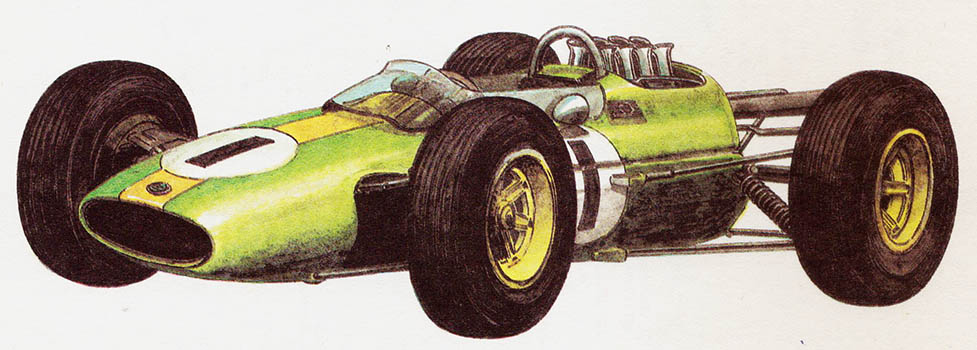LOTUS 33 – year 1965
Lotus Cars Ltd, Cheshunt, Herts., United Kingdom.
A winning car 1965 year. Lotus 33, constructed by Colin Chapman, equipped with a new one, V-shaped eight-cylinder Climax V8 MK4 engine with Lucas indirect fuel injection and contactless ignition by the same company. The cylinder heads had four valves. The five-speed gearbox was from the Zahnradfabrik company (ZF), Disc brakes from Girling, and the thirteen-inch Racing tires were produced by the well-known Dunlop company. Thanks to the lightweight monocoque body, the weight of the vehicle was only 456 kg. 1.5 liter engine with power 156,8 kW(213 KM) by 10 500 RPM made it possible to reach the speed 280 km/h.

Jim Clark, driving this car, he proved, that in 1965 of the year is the best player in the world. He won six of the nine Grand Prix races, included in the world championships. He even allowed himself not to compete in the Monaco Grand Prix, because the race was held on the day before the competition 500 Indianapolis mile, which for team boss Lotus – Colin Chapman – they were the best opportunity to show their cars to the whole world. Jim Clark, as the first European in a year 1916, when Italian Dario Resta won at Peugeot, he also won this difficult race. In addition to prestige, winning in such competitions brought significant material benefits - Clark won for the Lotus team 166 000 dollars, not counting material prizes, such, like a new Plymouth car (transporting competitors to the start), complete clothing of the player or a supply of meat for the whole year, etc.. The combination of Clark and Chapman's personalities created the Lotus legend in the 1960s.
The pre-war period was symbolically closed with the victory of Tazio Nuvolari, the era of compressors ended in 1951 Fangio's success year, Stirling Moss closed the 1950s, and the first half of the 1960s ended with the triumph of Lotus and Jim Clark, which sealed its success in 1965 year with the title of world champion. At the same time, the historical period ended, when racing cars were powered exclusively by classic piston engines.